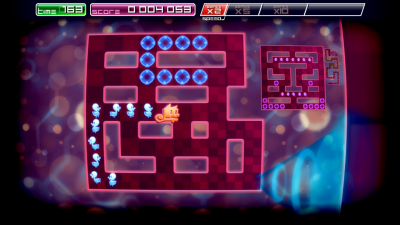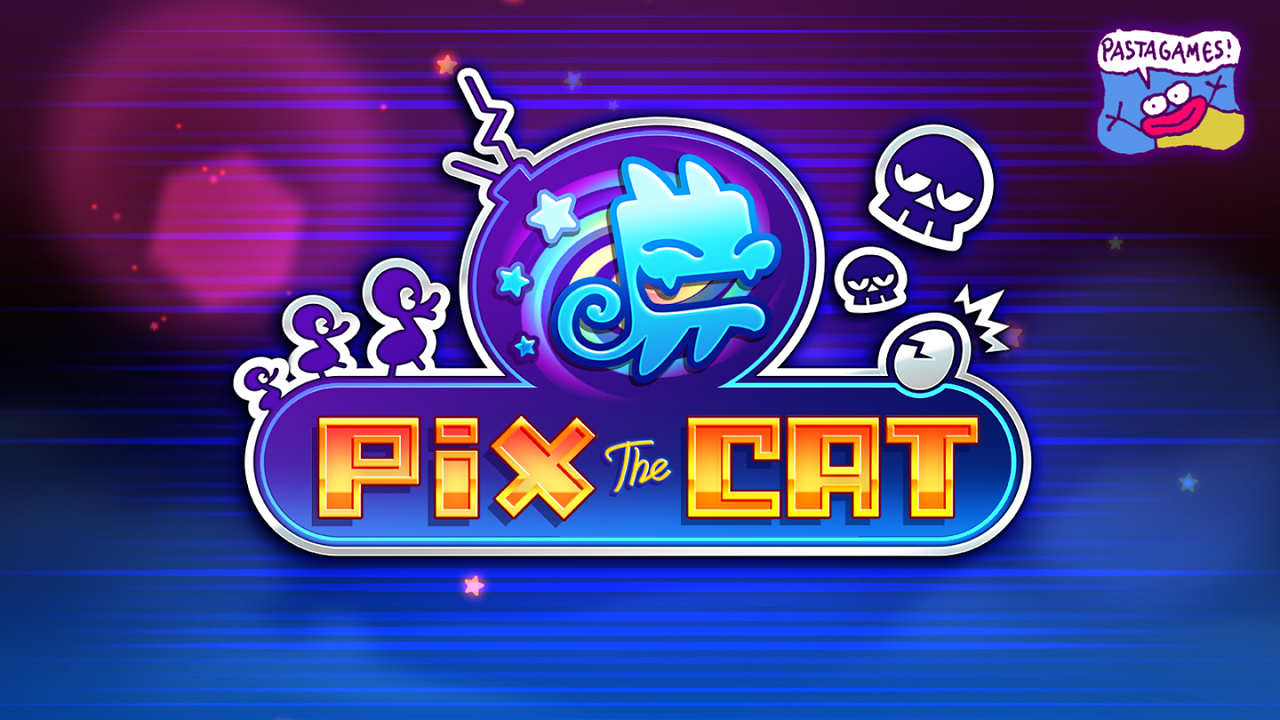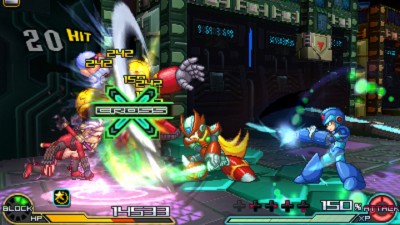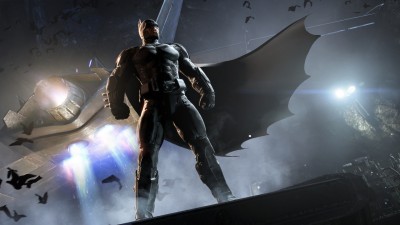For the longest time I always struggled to understand the obsession some people had over games such as Candy Crush, Temple Run, Jetpack Joyride and other games that involved doing essentially the same thing over and over in an attempt to make a seemingly pointless number grow in size. I always felt like games that simply involved the player chasing the highest score were archaic and belonged in places like arcades and amusement parks.
That was until I played France-based studio Pastagames’ Pix The Cat.
 At first glance, you’d be forgiven for thinking that it’s a puzzle game, perhaps a bit like Dreamcast classic Chu Chu Rocket. To do so would be a mistake, however. Pix The Cat is best described as a magical combination of the old school high-score legends Snake and Pac-Man - except with more weird blue cats, eggs, ducklings and bright neon colors. You play as the titular cat, who moves around various grids collecting eggs that when touched, hatch into little ducklings and begin to follow you around, creating a train behind you. Just like Snake, as the train grows in size, the map becomes harder to navigate. Thinking before moving becomes essential if you don’t want to end up boxed in and lose all your ducklings as well as your precious score multiplier.
At first glance, you’d be forgiven for thinking that it’s a puzzle game, perhaps a bit like Dreamcast classic Chu Chu Rocket. To do so would be a mistake, however. Pix The Cat is best described as a magical combination of the old school high-score legends Snake and Pac-Man - except with more weird blue cats, eggs, ducklings and bright neon colors. You play as the titular cat, who moves around various grids collecting eggs that when touched, hatch into little ducklings and begin to follow you around, creating a train behind you. Just like Snake, as the train grows in size, the map becomes harder to navigate. Thinking before moving becomes essential if you don’t want to end up boxed in and lose all your ducklings as well as your precious score multiplier.
If you manage to collect all the ducklings without boxing yourself in or running into one of the hazards that are often littered around the map (such as floating skulls and what resemble spikey emoticons), it’s your job to deliver them to safety. All around the map you’ll see circular targets that serve as drop-off points for the ducklings. Now, you don’t necessarily have to collect all the ducklings first before dropping them off, but doing so will greatly increase your score multiplier and speed. Once all the ducklings have been delivered to safety (I’m just assuming you deliver them to safety, who knows that happens to those little guys when they disappear into the unknown?) you’ll be able to move onto the next stage.
Sounds simple, right? It isn’t.
Here is where things get kind of cool. The map, called The Grid of Infinity, is exactly that: an infinite series of grids inside grids inside grids inside grids (and so on). The interesting thing is that you can always see a miniature version of the stage you are going to enter next inside the stage you are currently playing on. This means that more advanced players can estimate where the portals to the next stage are going to open, and arrange themselves so that they go into the next stage with an advantage and in the least amount of time. The result is a genuine feeling of being inside a never-ending world of bright neon colors and circuit boards.
As you progress further into this never-ending grid things start to get more complicated. Eventually you’ll be going in and out (you can return to the stage you were previously in) of the stage you’re currently trying to solve in order to reorganize yourself and re-enter in a different area. On top of this, the longer you go without breaking your combo multiplier, the faster Pix runs - until eventually you hit what the game calls “Fever Mode”, allowing you to rack up some huge scores at the cost of making Pix even more difficult to control.
In Fever Mode the screen will fluctuate in different shades of white, black and red, the music will change and beat faster, and you’ll end up going at ridiculous speeds (the type that lead you to make stupid mistakes in terms of maneuvering). Pix gains the ability to run through hazards without harming him or the ducklings, and your score will rise at incredible speeds. As soon as you’ve mastered Fever Mode it won’t be long before you’ll find yourself setting high scores and unlocking a number of extras such as different music, announcer voices or entirely new game modes.
The unlockable game modes include Laboratory, a laid-back puzzle mode that involves the player having to clear a screen in as little moves as possible; and Nostalgia mode, which simplifies the overall  gameplay (it does away with combo multipliers, Fever Mode, etc), dresses itself in black and white and presents itself to the player in various complicated and cleverly designed forms. There is also an Arena Mode exclusive to PS4 and featuring seven different arenas that can house you and 3 other players. In Arena Mode you collect “ammo eggs” that make your train longer, at the cost of slowing you down. Using your train you need to maneuver yourself in a way that trips up your opponent and causes him to mess up. Additionally there are three different types of eggs that grant you different weapons: the white stun-shots, the green proxy-mines, and the purple amok-rockets.
gameplay (it does away with combo multipliers, Fever Mode, etc), dresses itself in black and white and presents itself to the player in various complicated and cleverly designed forms. There is also an Arena Mode exclusive to PS4 and featuring seven different arenas that can house you and 3 other players. In Arena Mode you collect “ammo eggs” that make your train longer, at the cost of slowing you down. Using your train you need to maneuver yourself in a way that trips up your opponent and causes him to mess up. Additionally there are three different types of eggs that grant you different weapons: the white stun-shots, the green proxy-mines, and the purple amok-rockets.
While the visuals are simple, the bright neon colors and the messages which plaster the screen the longer you play provide a sense of manic urgency, driving you forward while giving you plenty of eye candy to look at. The action can sometimes be a little difficult to follow as a result, but overall Pix The Cat is one of those games that manages to achieve an awful lot with not very much, and transports the player back to those halcyon days of arcade machines sitting in darkened rooms filled with the smell of bubblegum and cigarette smoke.
The sound work is fantastic too; the music, while starting off slow to begin with, quickly picks up in both pace and energy until before you know it, you feel like you’re in the middle of some ecstasy-fuelled Happy Hardcore rave from the early 1990’s. The various announcer voices are a good mix, bursting with enthusiasm and celebrating your accomplishments in a way that will leave wide grins stretched across your face.
Pix The Cat has restored my faith in high score-dependent games, and Pastagames has won over a diehard fan. There’s plenty to do, plenty to unlock and plenty of rankings to climb on the scoreboard in this simple yet addictive game. It’s incredibly hard to put it down; every time I convince myself to put my Vita down, I always seemed to end up having another go. The artstyle is flashy and attractive (outside of Nostalgia mode, which is unique in it’s own way) and the upbeat and ever-changing music adds to the overall hyperactive atmosphere of the game.
Pac Man, your time is up. There’s a new king of score attacks in town, and its name is Pix the Cat.









